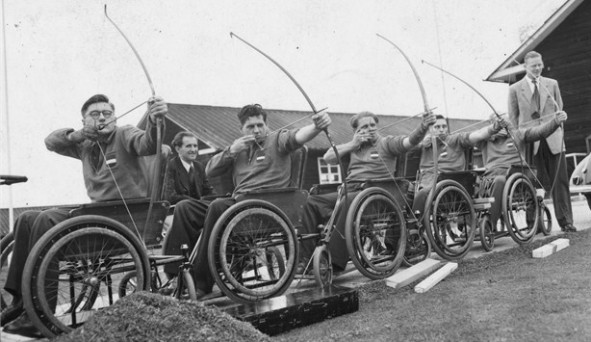The history of the Paralympic Games
The 16th Paralympic Games in history took place from August 24 to September 5 in Tokyo. Like the Olympic Games, these Games were held behind closed doors. Relive more than 60 years of the Paralympic Games with us.
The first official edition of the Paralympic Games dates back to 1960. However, the origins of this event date back to 1948. North of London in Stoke Mandeville, a German neurologist aims to speed up the recovery of WWII veterans . He will then organize, at the same time as the London Olympics, sports events for the wounded in his unit, all in wheelchairs. This year, two disciplines are present: archery and basketball.

Over the years, the International Games of Stoke Mandeville developed, and became, for their 9th edition in 1960 in Rome, the Paralympic Games.
THE PARTICIPANTS
Until 1976, only wheelchair athletes could participate in the Paralympic Games. During the first Games and until the 1980s, chairs suitable for sports didn't exist. Athletes tinker with everyday chairs in order to adapt them somewhat to their activity. The armchairs weigh at least 15kg, whereas today they weigh half as much.
From the Toronto Games in 1976, other athletes can take part in this event. Thus, of the 1657 athletes selected, 261 amputee athletes and 187 visually impaired athletes were present. In 1980 in Arnhem (the Netherlands), athletes with cerebral palsy were eligible to participate.
In 1996 in Atlanta and for the first time, people with intellectual disabilities participate alongside the physically and visually impaired. However, from 2000 and following the Sydney Games, athletes with intellectual disabilities were excluded from the Paralympic Games. This follows the cheating of the Spanish basketball team, which had mainly non-disabled players in its ranks. It was in 2012 in London that the intellectually disabled returned to the Paralympic Games.
WOMEN'S SPORT
On the female side, women are gradually appearing at the Paralympic Games. In 1968 in Tel Aviv, women's wheelchair basketball appeared. During the 1976 Games 15% of the athletes were women (253 women). Even though the number of female participants increases year after year, it is still much lower than the number of men. In 2016 in Rio, 39% of the athletes were women.
However, feminization is a real desire of the organization. The French flag carriers are proof of this, like Sandrine Martinet (judo) and Stéphane Houdet, flag carrier at the Tokyo Paralympic Games.
For 2024, the organizing committee will go even further, since these will be the first games with strict parity between women and men.
DEVELOPMENT, MEDIATIZATION AND DIFFICULTIES
In 1988, the Paralympic Games were held for the first time in history at the same location as the Olympics, in Seoul, South Korea. They take place two weeks after the Olympics.
Over the years, sporting performances turn out to be more and more colossal. The proof was in 1992 in Barcelona, where out of 487 events 279 world records were broken.
The media aspect of the Paralympic Games is constantly improving. The 1976 Games were the first to be broadcast daily on a Canadian channel. In 2008 in Beijing, 5,800 journalists were accredited and broadcast in 80 countries reached 3.8 billion viewers in total. In 2012 in London, the Paralympic Games are considered a turning point. Indeed, the stadiums are full (2.7 million tickets sold) and the audiences are there.
Despite significant developments, the Paralympic Games remain fragile. In 2016 in Rio, construction delays were noted, causing the budget to explode. Worries about the lack of budget occurring, as well as the Paralympic Games to be? After an intense debate, the Paralympic Games are taking place. This nevertheless highlights their place, which remains much less important than the Olympic Games.
However, a real improvement is to be underlined on these last Olympics!
TOKYO PARALYMPIC GAMES
This year 4400 Paralympic athletes were present in Tokyo. A record according to the International Paralympic Committee. These 4,400 athletes competed for a total of 539 medals for 23 disciplines. And, as in Rio in 2016, each of the medals included words written in braille, the words "Tokyo 2020" for that year.
23 disciplines are therefore on the program for these Games, from the most classic ... to the most original! Indeed, out of 23 sports, 21 disciplines have their Olympic equivalent like cycling, athletics, volleyball, or the two new sports of this edition: badminton and taekwondo. However, two sports do not have an Olympic equivalent: goalball, a team ball sport intended for athletes with a visual impairment, and boccia, similar to pétanque.
On the medal side, during its Olympics, France won 54 medals, including 11 in gold, 15 in silver and 28 in bronze, as well as in the 14th ranking of medals.
And it is precisely France and Paris that are organizing the Olympic and Paralympic Games in 2024. And, importantly, a common logo will be used for the first time. So, see you in 3 years !
